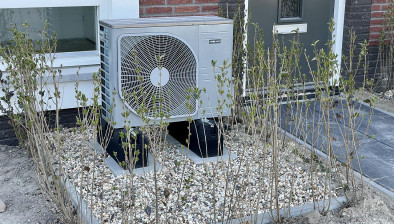Scotland’s next big infrastructure project ‘must create low carbon future’

In the week Scotland’s newest bridge opens to traffic, campaigners are setting out the benefits of another big infrastructure project that would help to create a more socially-just and low-carbon future.
Environmental organisation WWF Scotland and health charity the British Lung Foundation Scotland believe future Scottish Government infrastructure investment should be channelled into projects that will benefit the whole country, while also creating green jobs, boosting the economy and improving the nation’s health.
An example being put forward is for the Scottish Government to set a target in the forthcoming Climate Change Bill to ensure everyone in Scotland is living in a warm and healthy home by 2025, reaching the Energy Performance Certificate (EPC) band C.
Such a move would help one in three households in Scotland who currently live in fuel poverty, save millions for the NHS and create new jobs. A project such as this will would create jobs around every part of the country, creating and sustaining many small and medium sized businesses.
Irene Johnstone, head of the British Lung Foundation in Scotland, said: “The Scottish Government needs to increase its emphasis on preventing poor lung health. We know cold, damp and mouldy homes cause illnesses, including lung disease, which places additional strain on our health and social services. Therefore it’s clear that improving the condition of Scotland’s homes is a key component to the overall preventative healthcare agenda.
“Research shows that, as a minimum, properties should be raised to an Energy Performance Certificate band C to help reduce the risk of death and ill health associated with living in a cold home. We hope Scotland’s next big infrastructure project will be one that improves the health and wellbeing of the hundreds of thousands of people currently living in a cold and draughty home.”
Sarah Beattie-Smith, senior climate and energy policy officer at WWF Scotland, said: “The Scottish Government made a welcome commitment to make energy efficiency a National Infrastructure Priority back in 2015 but that commitment lacks the necessary funding, targets and delivery body to make it a reality.
“Without the money and the detail, the government’s commitment on energy efficiency is like committing to building a bridge without saying where it’s going. That’s why it’s so important that the Scottish Government uses the upcoming Climate Change Bill to embed new legal targets on energy efficiency, including getting all homes to an EPC rating of C by 2025.
“By doing so, the Scottish Government can create warmer homes, deliver huge economic benefits, improve the nation’s health and drastically reduce emissions too.”
Last year the Low Carbon Infrastructure Task Force recommended making all of Scotland’s buildings warm, healthy and affordable to heat as one a number of low carbon, future-proof engineering projects.























